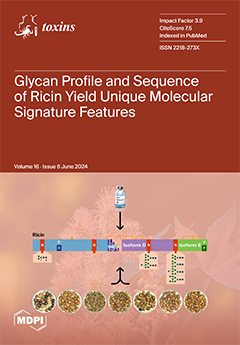Despite their evolutionary novelty, lizard venoms are much less studied in comparison to the intense research on snake venoms. While the venoms of helodermatid lizards have long been assumed to be for defensive purposes, there is increasing evidence of toxic activities more useful for predation than defence (such as paralytic neurotoxicity). This study aimed to ascertain the effects of
Heloderma,
Lanthanotus, and
Varanus lizard venoms on the coagulation and cardiovascular systems. Anticoagulant toxicity was demonstrated for the
Varanus species studied, with the venoms prolonging clotting times in human and bird plasma due to the destructive cleavage of fibrinogen. In contrast, thromboelastographic analyses on human and bird plasmas in this study demonstrated a procoagulant bioactivity for
Heloderma venoms. A previous study on
Heloderma venom using factor-depleted plasmas as a proxy model suggested a procoagulant factor was present that activated either Factor XI or Factor XII, but could not ascertain the precise target. Our activation studies using purified zymogens confirmed FXII activation. Comparisons of neonate and adult
H. exasperatum, revealed the neonates to be more potent in the ability to activate FXII, being more similar to the venom of the smaller species
H. suspectum than the adult
H. exasperatum. This suggests potent FXII activation a basal trait in the genus, present in the small bodied last common ancestor. This also indicates an ontogenetic difference in prey preferences in the larger
Heloderma species paralleing the change in venom biochemistry. In addition, as birds lack Factor XII, the ability to clot avian plasma suggested an additional procoagulant site of action, which was revealed to be the activation of Factor VII, with
H. horridum being the most potent. This study also examined the effects upon the cardiovascular system, including the liberation of kinins from kininogen, which contributes to hypotension induction. This form of toxicity was previously described for
Heloderma venoms, and was revealed in this study was to also be a pathophysiological effect of
Lanthanotus and
Varanus venoms. This suggests that this toxic activity was present in the venom of the last common ancestor of the anguimorph lizards, which is consistent with kallikrein enzymes being a shared toxin trait. This study therefore uncovered novel actions of anguimorph lizard venoms, not only contributing to the evolutionary biology body of knowledge but also revealing novel activities to mine for drug design lead compounds.
Full article






